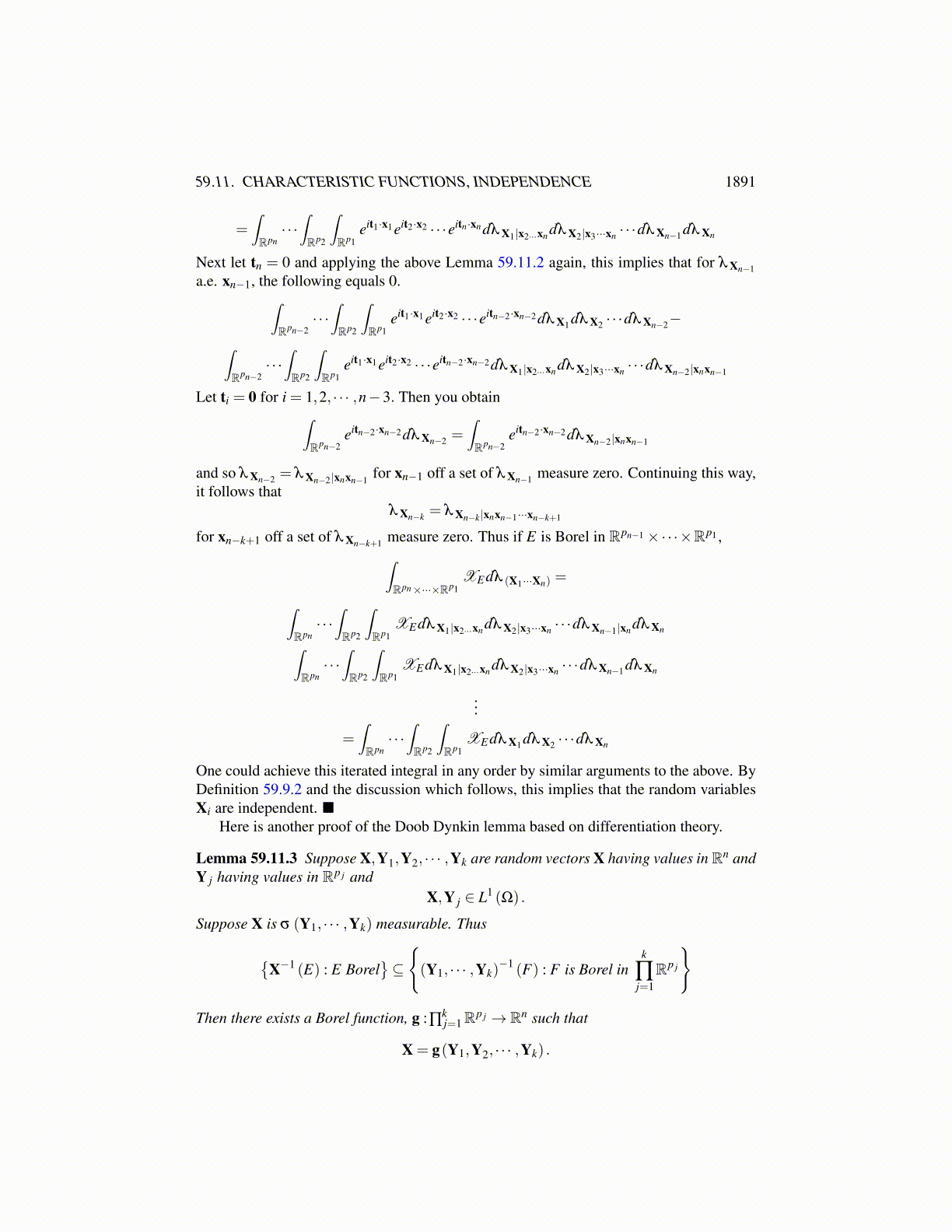
59.11. CHARACTERISTIC FUNCTIONS, INDEPENDENCE 1891
By the upcrossing lemma,
E(
Un[a,b]
)≤ E (|Xn|)+ |a|
b−a≤ K + |a|
b−a
and so by the monotone convergence theorem,
E(U[a,b]
)≤ K + |a|
b−a< ∞
which shows U[a,b] (ω) is finite a.e., for all ω /∈ S[a,b] where P(S[a,b]
)= 0. Define
S≡ ∪{
S[a,b] : a,b ∈Q, a < b}.
Then P(S) = 0 and if ω /∈ S, {Xk}∞
k=1 has only finitely many upcrossings of every inter-val having rational endpoints. Thus, for ω /∈ S, limsupk→∞ Xk (ω) = liminfk→∞ Xk (ω) =limk→∞ Xk (ω)≡ X∞ (ω). Letting X∞ (ω) = 0 for ω ∈ S, Fatou’s lemma implies∫
Ω
|X∞|dP =∫
Ω
lim infn→∞|Xn|dP≤ lim inf
n→∞
∫Ω
|Xn|dP≤ K
and so this proves the theorem.
59.11 Characteristic Functions, IndependenceThere is a way to tell if random vectors are independent by using their characteristic func-tions.
Proposition 59.11.1 If Xi is a random vector having values in Rpi , then the random vec-tors are independent if and only if
E(eiP)= n
∏j=1
E(eit j ·X j
)where P≡ ∑
nj=1 t j ·X j for t j ∈ Rp j .
The proof of this proposition will depend on the following lemma.
Lemma 59.11.2 Let Y be a random vector with values in Rp and let f be bounded andmeasurable with respect to the Radon measure λ Y, and satisfy∫
f (y)eit·ydλ Y = 0
for all t ∈ Rp. Then f (y) = 0 for λ Y a.e. y.
Proof: You could write the following for φ ∈ G∫φ (t)
∫f (y)eit·ydλ Ydt = 0 =
∫f (y)
(∫φ (t)eit·ydt
)dλ Y